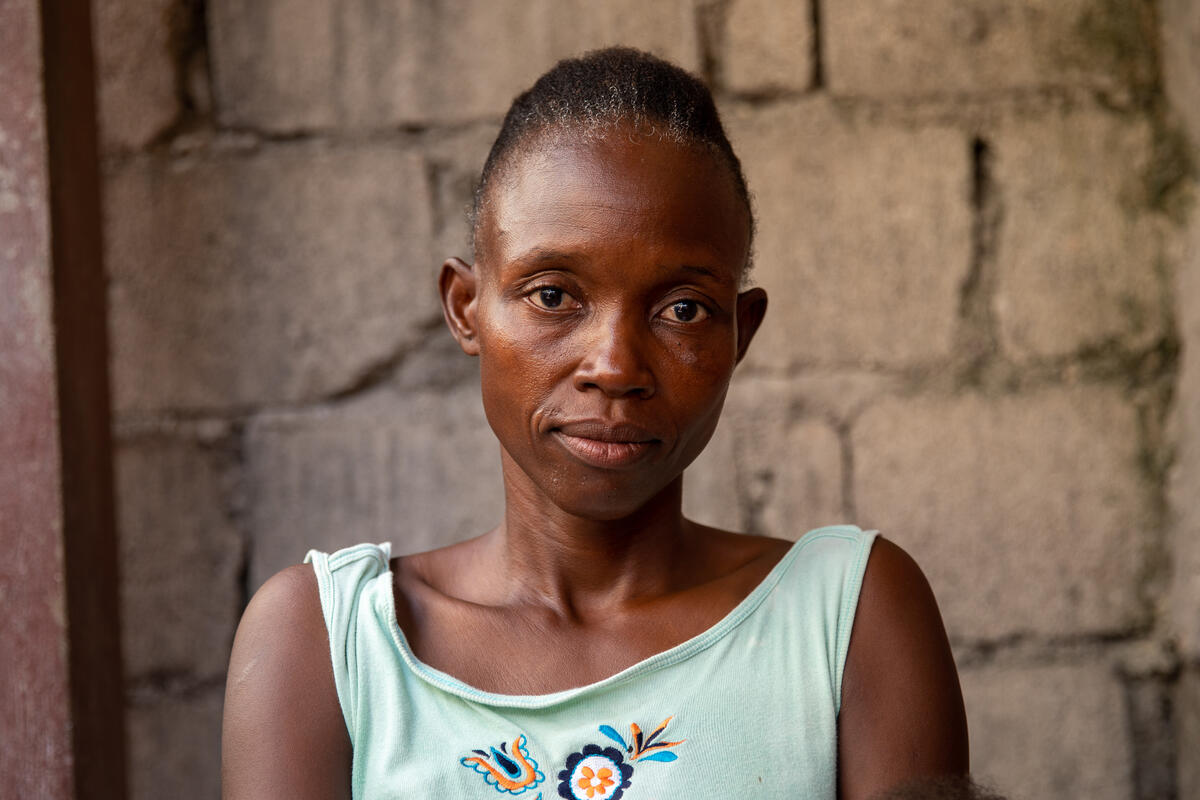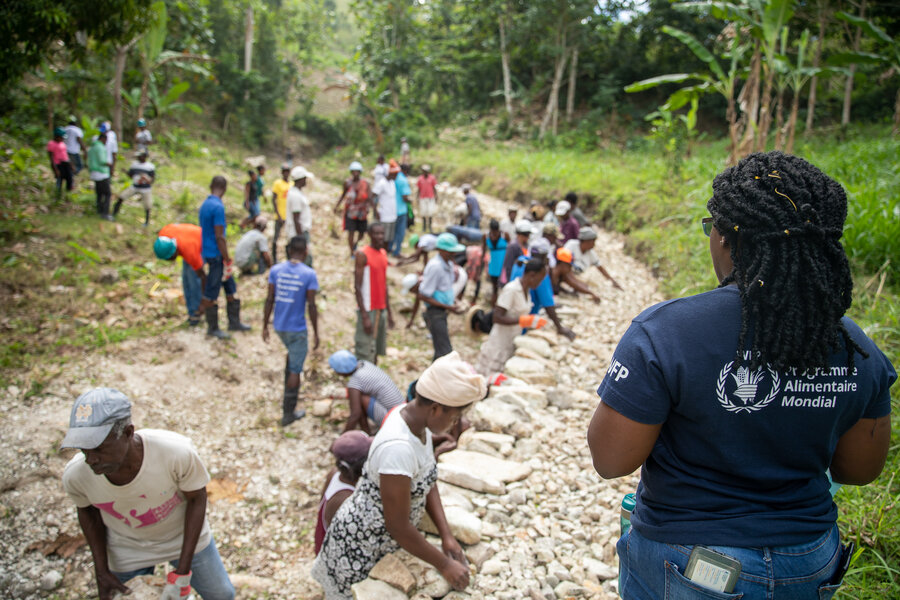One Year Later: WFP Continues to Help Haitian Communities Recover From a Devastating Earthquake

On August 14, 2021, a 7.2 magnitude earthquake struck the south of Haiti. Over 2,000 lives were lost and 137,000 homes destroyed. One year after earthquake, the U.N. World Food Programme continues to support communities in the three most affected departments: Grand Anse, Nippes and Sud.
Cash Assistance Helps IDPs Find New Homes
Marie was pregnant when the earthquake hit.
Her house crumbled to pieces, leaving her no choice but to take her two daughters and run in search of safety. Marie and her daughters became three of the 26,000 people to find refuge at a temporary displacement site, where they stayed for five months.

Marie gave birth to her third daughter while still living at the displacement site.
To help displaced families like Marie’s, the United Nations World Food Programme (WFP) worked with the government, the International Organization for migration and other UN agencies to distribute cash assistance. This cash could help displaced people settle in a permanent home again and cover their basic needs like food.
Photo: WFP/Theresa Piorr/2022Marie is one of more than 330,000 people who have received emergency assistance from WFP after the earthquake.
“With the assistance I received, I was able to rent this house because the old one was completely cracked and I didn’t own it either. I also bought food supplies and basic necessities,” she says.
WFP Projects Boost Resilience to Future Disasters
In southern Haiti, a line of women carry rocks in the hands and on their heads as they descend a hill. The rocks will help build barriers to slow the flow of water across this valley and prevent the erosion of land – land that is essential to this rural farming community’s food security.
Just down the valley, another team is clearing and reconstructing a road.
Both groups are part of the U.N. World Food Programme’s resilience program that rebuilds community infrastructure like roads, trails or bridges. The program also includes reforestation and agricultural projects. In exchange for working on a project, participants receive cash assistance to improve their livelihoods. Meanwhile, the projects they work on – from preventing erosion to reconstructing roads – will boost their communities’ resilience to natural disasters. The next time an earthquake or flood hits, they’ll be better prepared.
Photo: WFP/Haiti/2022WFP Programme Assistant Sophia Toussant oversees a resilience project site in Arniquet.
“The money people have earned is important in the short-term to get them through the difficult post-earthquake period,” says the U.N. World Food Programme’s Programme Assistant Sophia Toussaint. “But it’s also crucial to their longer-term future. Protecting the hillside stops soil erosion and means farmers are less likely to lose their crops in a natural disaster. Having a good road allows produce to be more easily sent to market,” she says. “It also means that aid can be delivered more effectively, and people can get to hospital if there is another earthquake.”
For people displaced or deprived of basic resources by catastrophic events, the U.N. World Food Programme is a lifeline. That’s because before, during and after an emergency, the U.N. World Food Programme is there to assist communities in crisis and provide long-term solutions to hunger.
This story originally appeared on WFP’s Stories on August 12, 2022 and was written by Theresa Piorr and Stephanie Rigaud.






